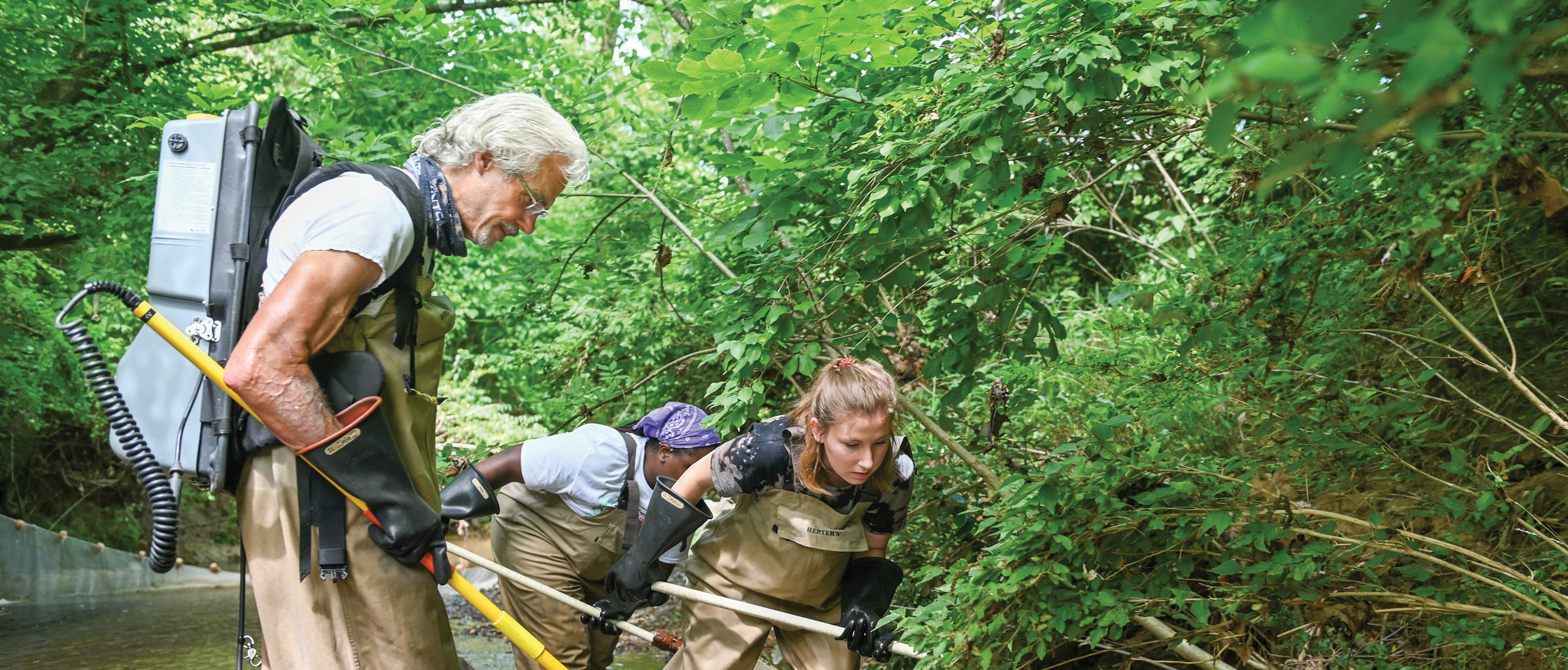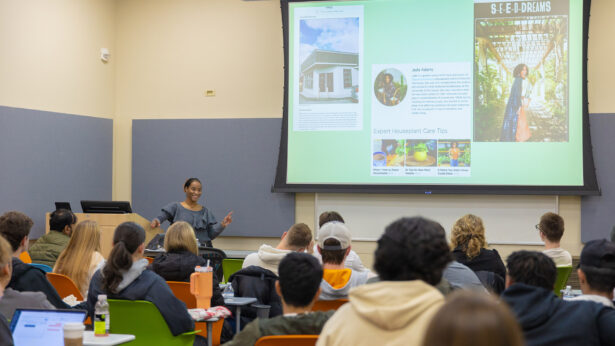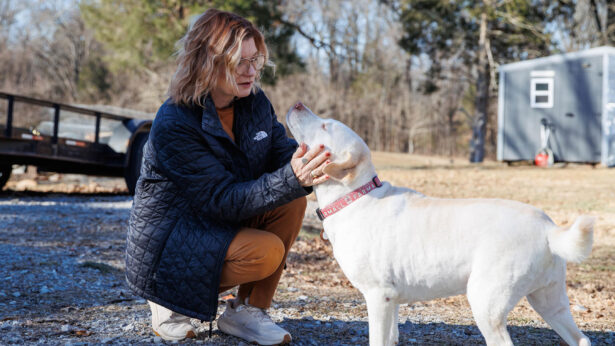By Shawn Ryan | Photos by Angela Foster
“Don’t touch the water,” Mark Schorr warns. The five UT Chattanooga students wading alongside him in a creek pay close attention to his advice. None want to get zapped by the device in his hands.
Known as a fish shocker, it sends a small shot of electricity into the creek through a pole with a small circle of metal on the end. Fish are stunned without dying, explains Schorr, a professor in the UTC Department of Biology, Geology and Environmental Science.
Wearing waders with rubber boots and gloves to protect them from getting shocked as well as keep them dry, the students hold fiberglass poles with nets that don’t transmit electricity. But no sense in taking chances.
Wading knee deep in the creek, Schorr and the students aren’t fishing for food. They’re swishing their nets through the water to scoop up small fish—most about a finger long—living in the creek, tallying the number and different species they find and seeing if they’re healthy.
“Oh, I missed it!” says slightly exasperated Jasmin Barton-Holt, a senior geology major.
Her irritation lasts less than a second, though, as she dips her net back into the water and snags minnow after minnow.
Jacob Hart, a senior in environmental science, says he’s a catch-and-release fisherman in his spare time, so pulling fish from the stream is just a different way to the same destination.
“I’ve got to say, it’s pretty fun.”
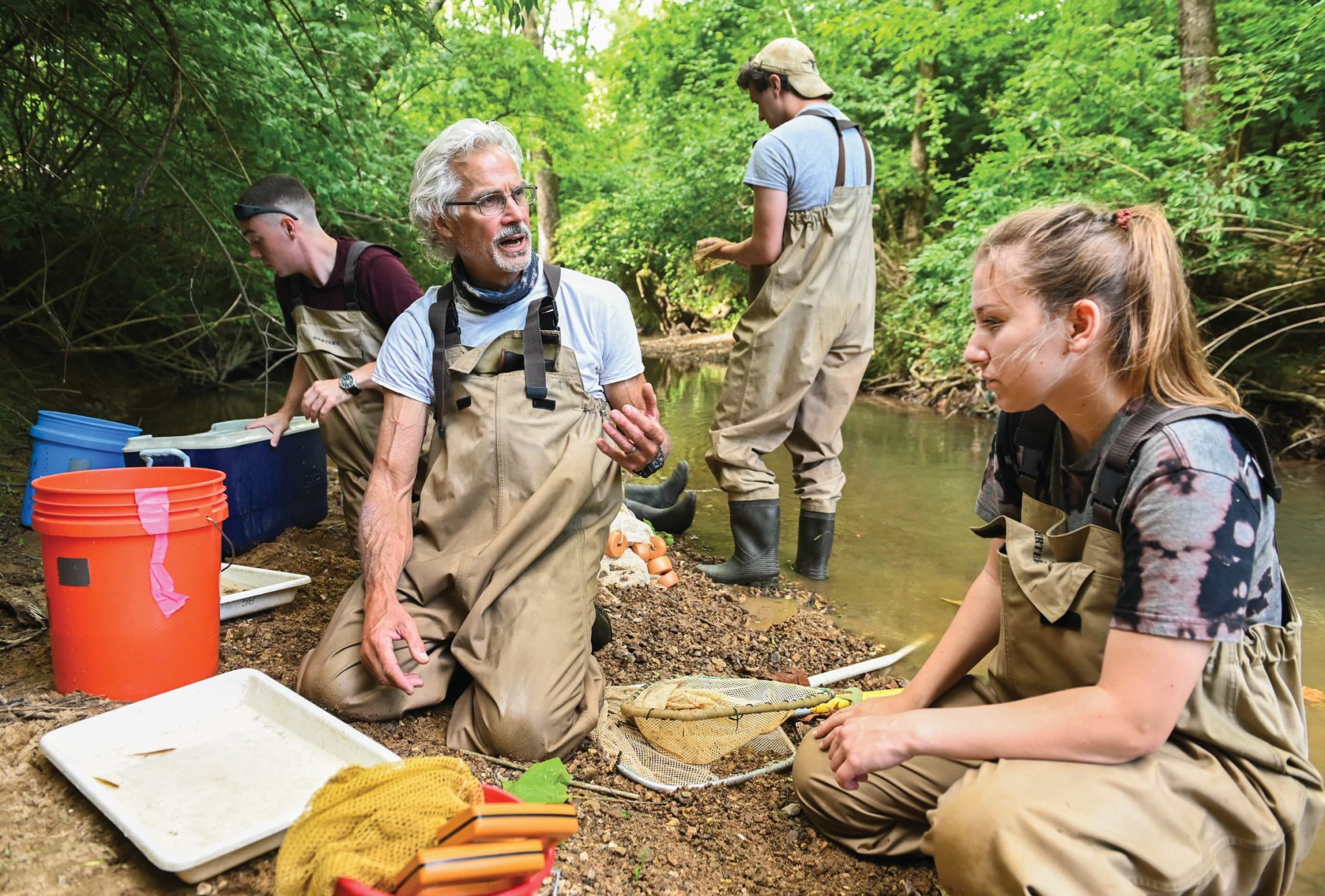
Healthy…or not
The work is linked to a project Schorr has been conducting for the past two decades, examining urban streams and local watersheds and sharing the data with the Tennessee Wildlife Resources Agency. The research measures and determines the effectiveness of stream restoration projects in the urban environments around Chattanooga.
It’s not good, he says.
New neighborhoods, apartment complexes, shopping centers and other developments are being built at a breakneck pace in the Chattanooga area, he explains. To make room, trees are being cut down. Soil is being cleared of vegetation, and in many cases, asphalt is replacing it.
In return, stormwater rushes across the now-naked or paved landscape. Instead of being slowed and absorbed by plant-covered ground, the water drags sediment and debris with it, then plunges into nearby streams.
“Sediment can reduce the amount of oxygen in the water, and the fish actually suffocate,” Schorr says.
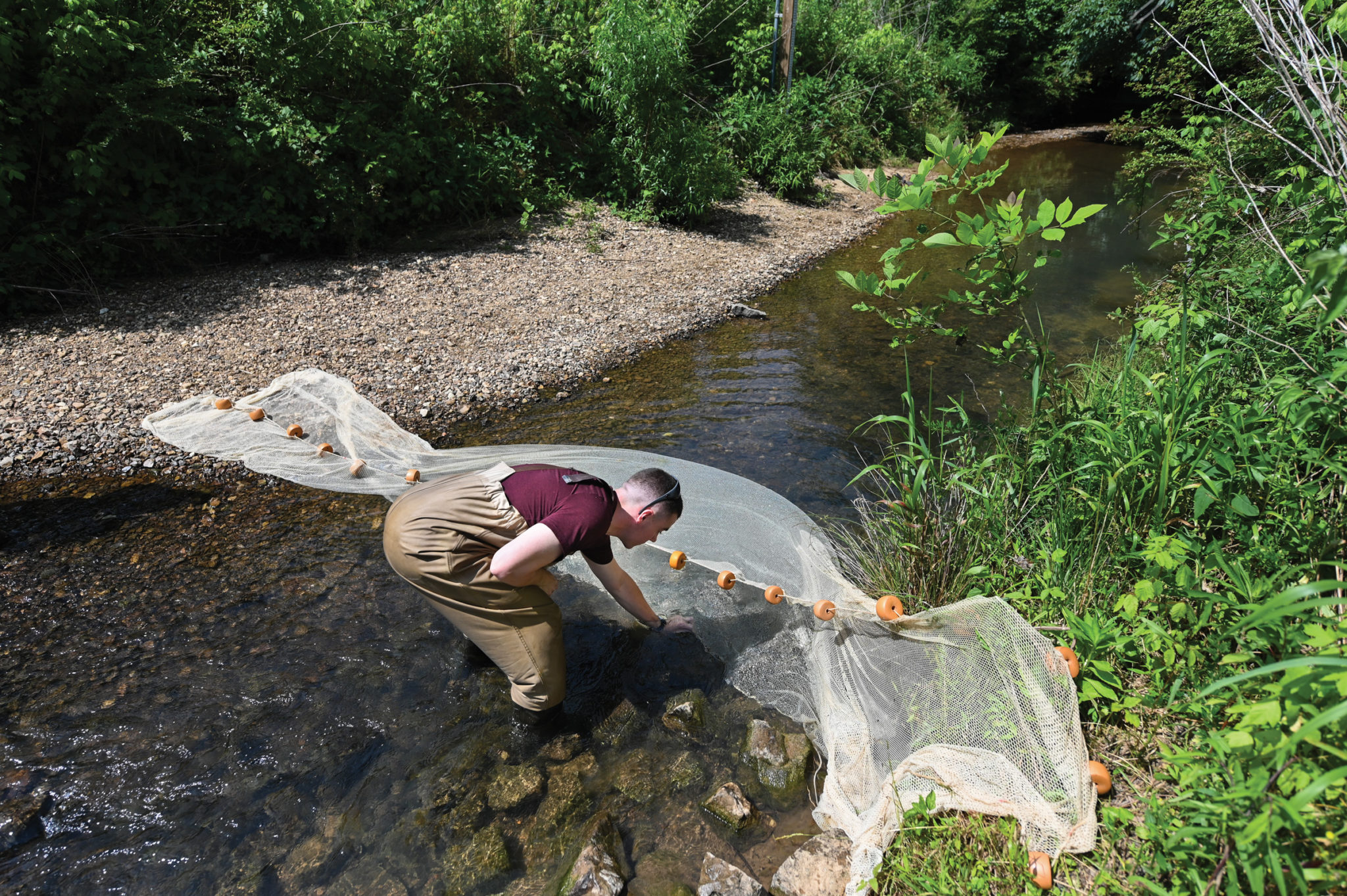
Chemical pollution also can filter into the water, sometimes causing physical damage to the fish and other animals that live in it.
“We’re looking at each individual fish to see if there’s any sign of stress. External abnormalities. Ulcerated regions. Fin rot. Noticeable ectoparasites attached to them,” he says.
On a warm day in May, while working with the students in Mountain Creek—located at the base of Signal Mountain about six miles from downtown Chattanooga—Schorr finds a fish with a white lesion on it. It’s not naturally occurring.
Newer data is compared to previous samplings dating back decades to see whether streams are improving, staying the same or deteriorating. Most are not getting better, Schorr says.
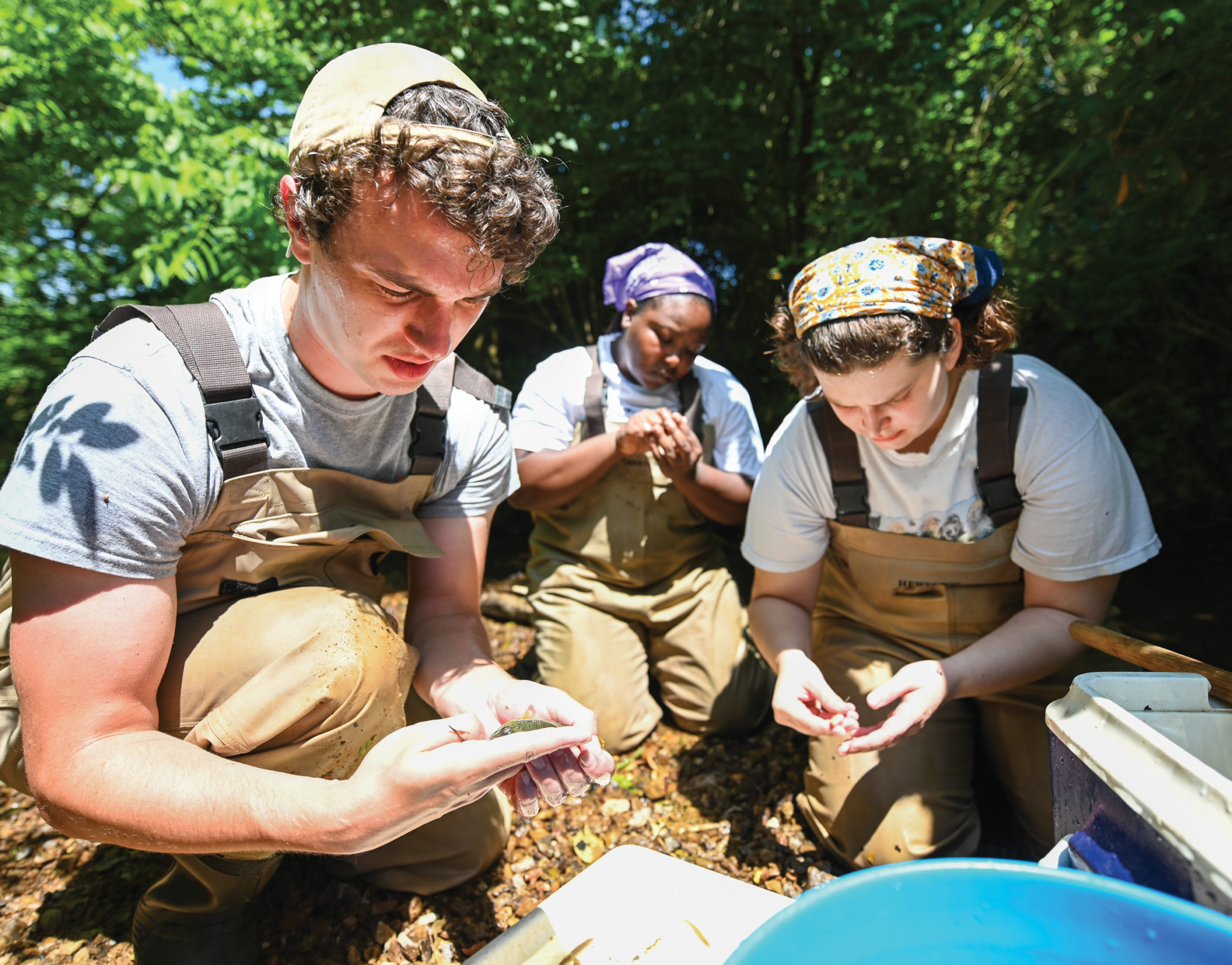
Hands In
Along Mountain Creek, in sections about 300 to 400 feet each, Schorr and his students sample about one-third of a mile overall each day. The research takes place over several weeks, with daily plunges into the creek for Schorr and students.
As Schorr wades slowly through stream, the students walk alongside and behind him, swooping the water with their nets, gathering hundreds of fish each day.
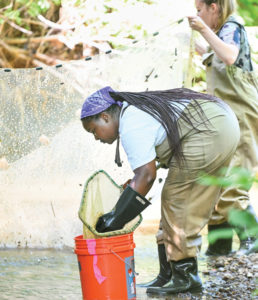
Once they’re scooped into nets, the fish are transferred into five-gallon buckets and 10-gallon coolers. Then the students reach their hands into the containers to pull out fish after fish. Abbreviated names pour out:
BLG (bluegill). LSR (large-scale stone roller). REB (red-eyed bass). NHS (northern hog sucker). And many more.
Barton-Holt records the names and numbers of the species as the other students loudly ID each fish, toss it into the stream and go for more.
“Y’all, this is getting insane,” she says after a couple of minutes of rapidly jotting down the flood of information.
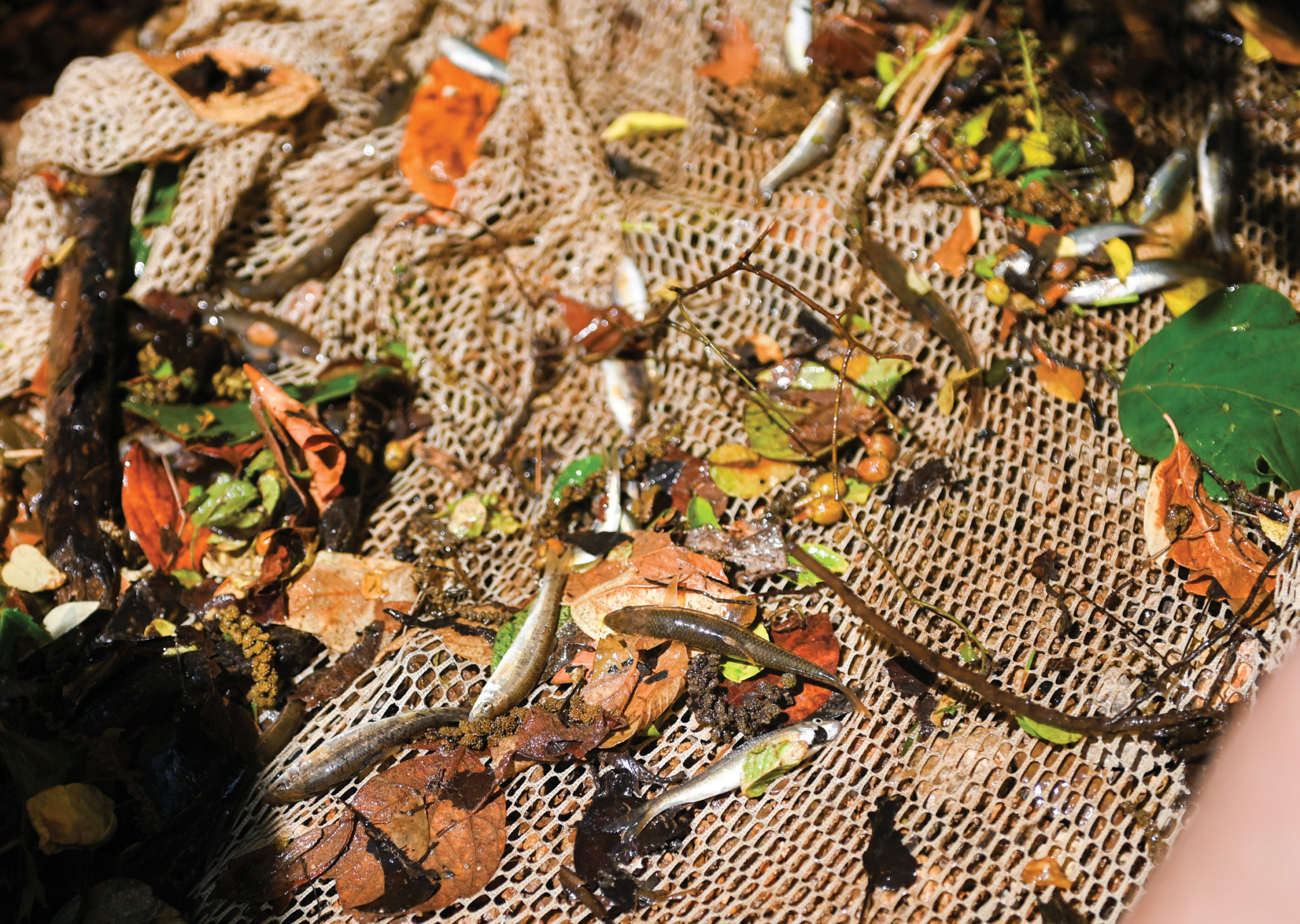
In a certain way, though, that insanity is what the students are seeking.
“This is exactly what I’d love to do as a job,” says Hunter Lamb, who recently graduated with a master’s in environmental science and is working as a research assistant on the project.
Senior geology major Sierra Beatty has another take on the project.
“This is a blast,” she says. “I’ve been having so much fun out in the field that I wish all classes were taught like this.”
